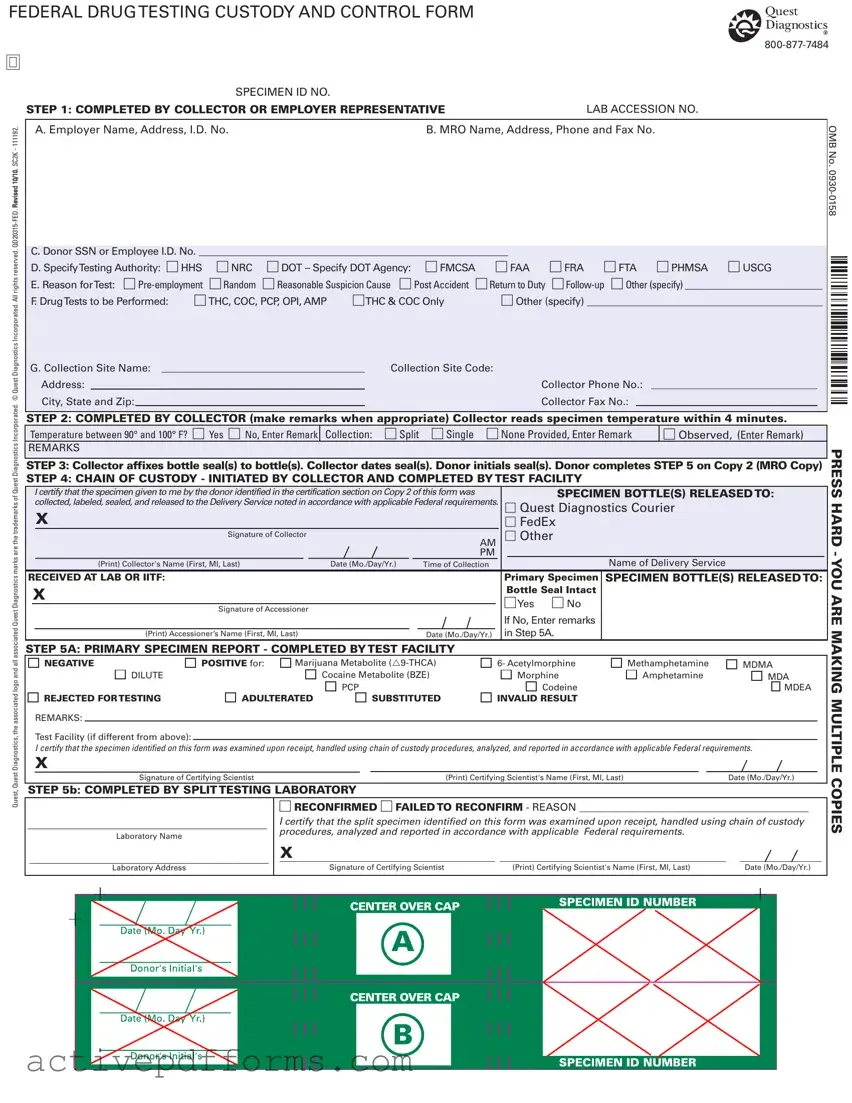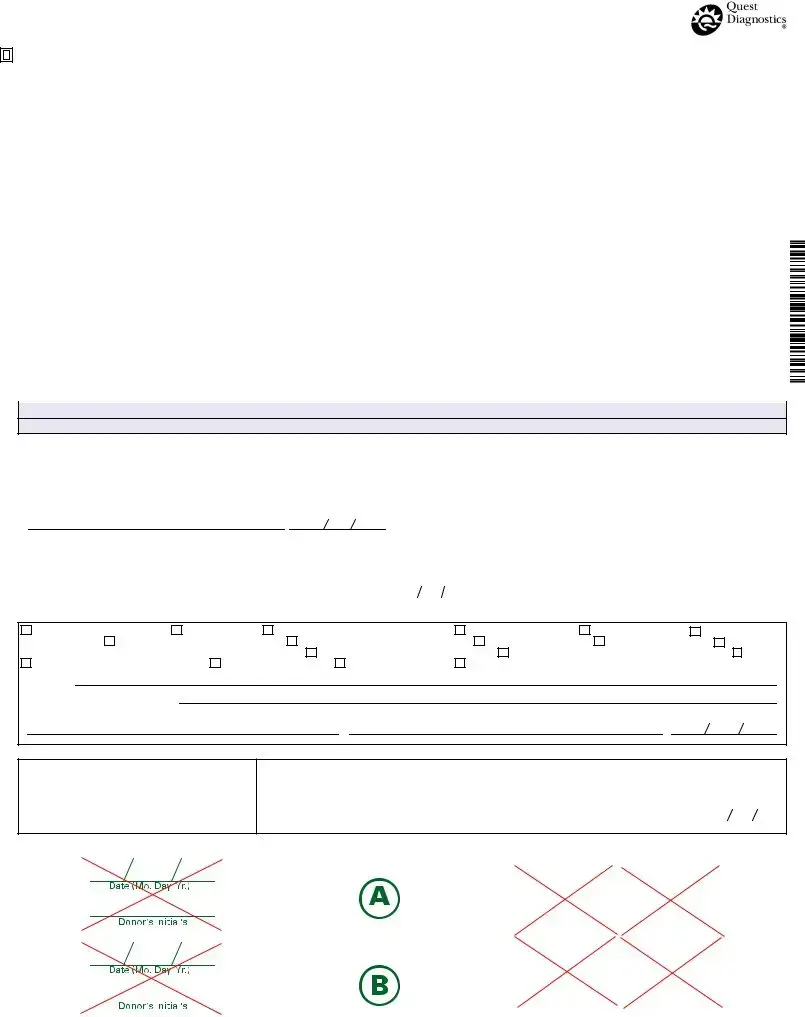In the realm of employment and regulatory compliance, the Federal Drug Testing Custody and Control Form stands as a critical document, meticulously designed to oversee the integrity of the drug testing process from collection to analysis. This multi-step form, which includes the involvement of various stakeholders—employers, collection sites, and laboratories—ensures a meticulous audit trail for the specimen's journey. Quest Diagnostics, a prominent entity in the medical testing field, marks its endorsement through the acquisition of unique identifiers like the Specimen ID No. and Lab Accession No., signifying the company's integral role in the drug testing ecosystem. The form features explicit sections dedicated to capturing essential information, ranging from employer details, the Medical Review Officer (MRO)'s contact information, to the donor's identification, underlining the operation's high stakes in terms of privacy and accuracy. Distinct scenarios prompting the test, such as pre-employment screening and post-accident analysis, highlight the versatility and necessity of the form across diverse circumstances. Moreover, the inclusion of specific drugs to be screened—THC, COC, PCP, OPI, AMP—underscores the meticulous approach to detecting substance abuse, whereas the step-by-step guidance to collectors and detailed reporting requirements imposed on laboratories underscore the form's role in ensuring the reliability and legality of the drug testing process. Hence, the Federal Drug Testing Custody and Control Form represents more than just paperwork; it is a cornerstone of ethical labor practices, legal compliance, and the safeguarding of workplace safety and public trust.

